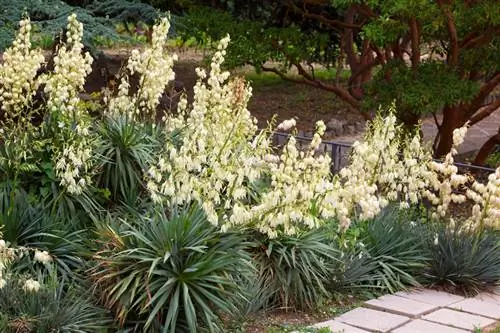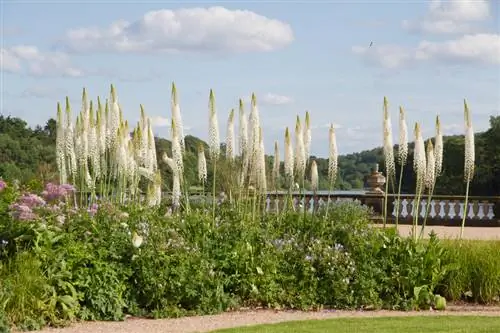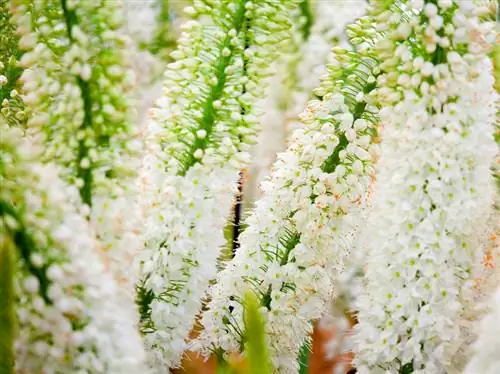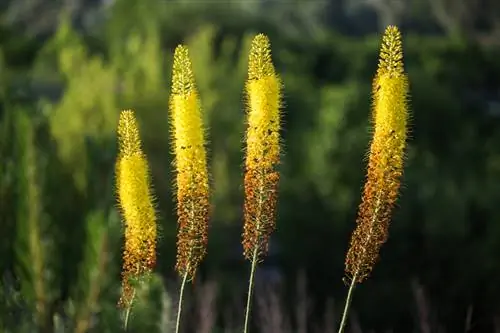- Author admin [email protected].
- Public 2023-12-16 16:46.
- Last modified 2025-01-23 11:20.
The plant genus Eremurus includes around 45 different species, which can be distinguished based on their height and flower color. Despite its exotic appearance, the steppe candle is not necessarily a container plant, as under the right conditions it can easily be overwintered outdoors, even in cold regions.

Is the steppe candle winter-proof?
The steppe candle is hardy and can overwinter outdoors in cold regions. Protective measures are only necessary for specimens in small plant pots. To protect against waterlogging and frost damage, a drainage layer and a cover with dry leaves or spruce branches are recommended.
Origin and vegetation cycle of the steppe candle
In nature, the distribution area of the genus Eremurus extends from Iran, Iraq and Afghanistan to China, Turkey and Ukraine. The natural habitats of the steppe candle are often cold plateaus, subalpine areas and grassy steppes. This doesn't bother the perennial, herbaceous plant, as it survives the cold winter months thanks to the rhizomes with their characteristic “starfish shape” that act as survival organs. The lancet-shaped leaves and the flower stalks, which are up to 2 meters high, grow out of it every year and die after the flowering period.
Wintering in the garden
Even in areas with severe winter frosts, steppe candles planted outdoors are usually hardy without special winter protection. Protective measures should only be taken for specimens in smaller plant pots, as these contain less plant substrate as an insulation layer. It can be dangerous for the steppe candle in soils with winter waterlogging. However, you can prevent this risk of root rot by digging the planting hole a little deeper when planting and providing it with a drainage layer made of gravel (€13.00 on Amazon) and sand.
What winter protection can do
A winter cover with mulch or compost can not only protect the steppe candle from the frosty temperatures, but also enrich the soil with nutrients for the next season. Dry leaves or spruce twigs are even better for this purpose for the following reasons:
- Provides less permanent moisture in the soil than mulch or compost
- can be removed more easily in spring
- protects the plants from excessive soil warming in spring
Steppe candles that sprout too early in protected locations sometimes suffer from the late frosts in April and May in spring. A cover delays the emergence of the leaves and can therefore prevent frost damage.
Tip
So that the steppe candle can grow optimally in its new location before winter, the rhizomes should not be planted too late. Early autumn from the end of August to mid-September is ideal for this so that you can admire the impressive flowers the following year.






